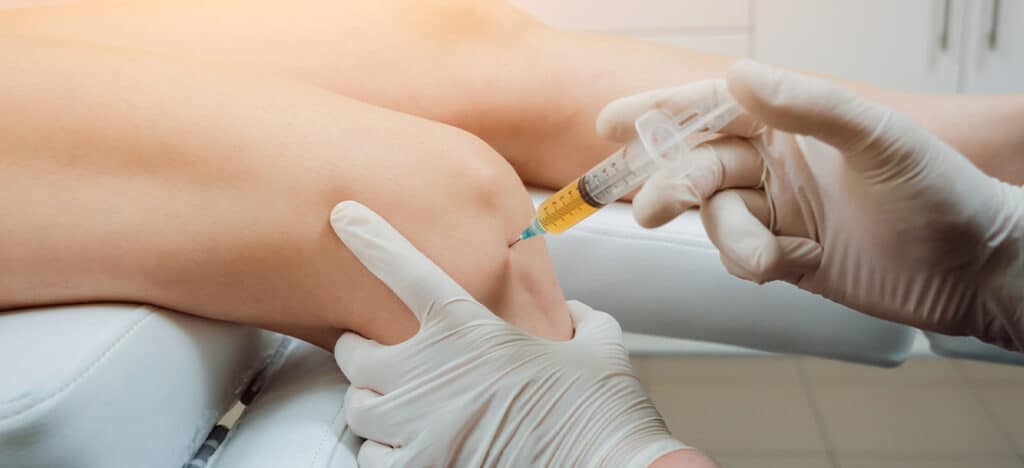Dextrose Prolotherapy: What To Expect And How It Works
Dextrose Prolotherapy, a cutting-edge treatment gaining popularity in regenerative medicine, offers hope for individuals seeking relief from chronic pain and musculoskeletal injuries. This innovative procedure involves the injection of a dextrose solution into damaged or weakened tissues, stimulating the body’s natural healing process and promoting tissue repair. By targeting the root cause of the problem, Dextrose Prolotherapy aims to address joint pain, ligament and tendon injuries, and even conditions like osteoarthritis. In this blog post, we will delve into the world of Dextrose Prolotherapy, exploring how it works, what to expect during the treatment, its effectiveness, and its potential benefits. If you’re looking for a non-surgical, drug-free approach to healing, keep reading to discover the promising possibilities of Dextrose Prolotherapy.
What Is Dextrose Prolotherapy?
Dextrose Prolotherapy is a regenerative medical treatment that involves the injection of dextrose (a form of glucose) solution into damaged or weakened tissues, such as joints, ligaments, and tendons. This procedure aims to stimulate the body’s natural healing response and promote tissue repair. Dextrose, a naturally occurring sugar, is the prolotherapy agent because it is believed to trigger an inflammatory reaction at the injection site, leading to the recruitment of healing cells and the production of new collagen fibers. This process aims to strengthen and stabilize the injured area, reducing pain and improving overall function. Dextrose Prolotherapy is a non-surgical, minimally invasive approach that can treat various musculoskeletal conditions, including chronic pain, joint instability, and certain forms of arthritis.
How Does Dextrose Prolotherapy Work?
Dextrose Prolotherapy harnesses the body’s natural healing mechanisms to promote tissue repair and regeneration. The process involves the following steps:
- Evaluation and Assessment: Healthcare professionals evaluate the condition, perform a thorough assessment, and perform diagnostic imaging before Dextrose Prolotherapy.
- Injection of Dextrose Solution: Dextrose solution is injected into the targeted area using a fine needle, minimizing discomfort with a local anesthetic.
- Inflammatory Response: Dextrose irritates damaged tissues, triggering an inflammatory response, stimulating the immune system, and initiating healing.
- Healing and Tissue Repair: Inflammatory response in dextrose solution activates specialized cells, fibroblasts, and mesenchymal stem cells, promoting collagen fiber production for tissue repair, strengthening, and pain reduction.
- Follow-up Treatments: Dextrose Prolotherapy involves a series of gradual collagen and tissue repair treatments, depending on injury severity.
Mechanism Of Action: Exploring The Healing Process
The mechanism of action behind Dextrose Prolotherapy lies in its ability to stimulate the body’s natural healing process and promote tissue repair. Let’s explore the healing process that takes place after Dextrose Prolotherapy treatment:
- Growth Factors and Cytokines: Inflammatory response releases growth factors and cytokines, promoting tissue regeneration and healing by coordinating immune responses and specialized cells.
- Fibroblast Activation: Fibroblasts, responsible for collagen production, are stimulated by dextrose solution, enhancing tissue repair and strengthening damaged tissues.
- Collagen Formation and Tissue Remodeling: Newly synthesized collagen fibers replace damaged tissues, providing strength and support and contributing to tissue remodeling and improved structural integrity.
- Pain Reduction and Improved Function: The healing process improves function, reduces pain, and supports joints, ligaments, and tendons for enhanced stability and mobility.
What To Expect During Dextrose Prolotherapy Treatment
When undergoing Dextrose Prolotherapy treatment, it’s helpful to understand what to expect. Here’s a general overview of what you can anticipate during the procedure:
- Initial Consultation: Dextrose Prolotherapy begins with a consultation with a healthcare professional, discussing medical history, symptoms, and previous treatments. Physical examinations and diagnostic tests may be requested.
- Preparation: Before the treatment, you may be advised to avoid taking certain drugs, such as blood thinners, to reduce the risk of bleeding or bruising. The injection site will be cleaned and sterilized to maintain a sterile environment.
- Injection Process: The healthcare provider injects dextrose solution into targeted tissues using a fine needle, guided by palpation or imaging techniques, depending on the condition and treatment plan.
- Sensations and Discomfort: Injections may cause pressure, discomfort, or stinging sensations; local anesthetic in dextrose solution minimizes pain; most people find the procedure tolerable and quick.
- Post-Treatment Care: Following injections, rest, avoiding strenuous activities, and following the healthcare provider’s post-treatment instructions for optimal healing and minimizing complications.
- Series of Treatments: Dextrose Prolotherapy involves a series of treatments spaced weeks apart, depending on the condition and body response. Healthcare providers discuss treatment plans and recommended frequency and duration.
- Gradual Improvement: Dextrose Prolotherapy involves healing and tissue repair, requiring time for symptoms to improve; realistic expectations are crucial for full benefits.

Conditions Treated With Dextrose Prolotherapy
Dextrose Prolotherapy is a versatile treatment option that can be used to address various musculoskeletal conditions. Here are some of the common conditions that can be treated with Dextrose Prolotherapy:
- Joint Pain and Instability: Dextrose Prolotherapy can effectively treat chronic joint pain, including osteoarthritis, rheumatoid arthritis, and degenerative joint disease. It helps to strengthen the surrounding ligaments and tendons, providing stability and relieving pain.
- Ligament and Tendon Injuries: Sprains, strains, and partial tears of ligaments and tendons can benefit from Dextrose Prolotherapy. The treatment aims to promote the repair and regeneration of these soft tissues, restoring their strength and function.
- Osteoarthritis: Dextrose Prolotherapy offers a non-surgical alternative for individuals suffering from osteoarthritis. By stimulating tissue repair and reducing inflammation in the affected joints, it can alleviate pain, improve joint function, and potentially delay the need for surgical intervention.
- Chronic Musculoskeletal Conditions: Dextrose Prolotherapy can address various persistent musculoskeletal disorders, such as chronic low back pain and neck discomfort. It targets the underlying cause of the pain, promoting healing and providing long-term relief.
- Sports Injuries: Dextrose Prolotherapy is often utilized in the treatment of sports-related injuries, including tendonitis, sprains, and strains. It can help athletes recover from injuries and return to their sport more quickly.
Effectiveness And Benefits Of Dextrose Prolotherapy
Dextrose Prolotherapy has shown effectiveness and offers several potential benefits for individuals seeking regenerative treatment options. Here are some key points regarding its efficacy and benefits:
- Research Studies and Clinical Evidence: Dextrose Prolotherapy improves pain reduction, joint stability, range of motion, and overall function in musculoskeletal conditions through research and clinical trials.
- Tissue Repair and Regeneration: Dextrose Prolotherapy stimulates a healing response in damaged tissues, promoting tissue repair and regeneration through an inflammatory response.
- Non-Surgical Approach: Dextrose Prolotherapy is a non-surgical treatment option, reducing risks and complications and making it an alternative for those with medical contraindications or preferring surgery.
- Pain Reduction and Improved Function: Dextrose Prolotherapy reduces chronic musculoskeletal pain by strengthening tissues, stabilizing joints, improving function, and enhancing the quality of life.
- Minimally Disruptive: Dextrose Prolotherapy treatments are typically performed on an outpatient basis and require minimal downtime. The injections are relatively quick, and most individuals can resume their regular activities shortly after the procedure.
- Personalized Treatment Plans: Dextrose Prolotherapy is tailored to individual needs, utilizing regenerative medicine professionals to assess medical history, examination, and imaging results.
- Potential Long-Term Benefits: Dextrose Prolotherapy aims to address the underlying cause of the musculoskeletal condition, promoting long-term healing and stability. The therapy can provide lasting relief by stimulating tissue repair and regeneration and potentially reduce the need for additional treatments or interventions.
Choosing A Dextrose Prolotherapy Provider
When considering Dextrose Prolotherapy as a treatment option, choosing a qualified and experienced provider specializing in regenerative medicine is crucial. Here are some key factors to consider when selecting a Dextrose Prolotherapy provider:
- Qualifications and Certifications: Ensure that the healthcare professional performing Dextrose Prolotherapy is licensed and certified in their respective field. Look for providers who have received specialized training in regenerative medicine and have specific expertise in administering Dextrose Prolotherapy.
- Experience and Expertise: Choose a Dextrose Prolotherapy provider with extensive experience, including years of practice, successful procedures, and success rate, for effective treatments.
- Patient Testimonials and Reviews: Seek patient testimonials and reviews for Dextrose Prolotherapy providers to assess quality, professionalism, and treatment outcomes.
- Collaboration with a Multidisciplinary Team: Dextrose Prolotherapy requires cooperation with healthcare professionals like orthopedics, physical therapists, and pain management specialists for comprehensive care.
- Consultation and Communication: Schedule a consultation with a provider to discuss the condition, treatment options, and expectations. Assess their communication, answer questions, and provide clear explanations for a positive treatment experience.
- Facility and Equipment: Assess the facility where the Dextrose Prolotherapy treatment will be performed. Ensure that it adheres to proper hygiene and safety standards. The clinic should have appropriate equipment and resources to effectively and comfortably provide treatment.
- Cost and Insurance Coverage: Inquire about the cost of Dextrose Prolotherapy treatments and whether your health insurance covers them. Clarify any financial obligations or potential out-of-pocket expenses before committing to the treatment. It’s essential to have a clear understanding of the costs involved.
In conclusion, Dextrose Prolotherapy offers a promising avenue for individuals seeking effective, non-surgical treatment options for musculoskeletal conditions. This regenerative therapy aims to promote tissue repair, reduce pain, and improve overall function by harnessing the body’s natural healing response. When considering Dextrose Prolotherapy, choosing a qualified provider with experience in regenerative medicine is crucial. If you’re interested in exploring the benefits of Dextrose Prolotherapy or have any questions, don’t hesitate to contact us today. You can reach us via email at info@activemedhealth.com. Our dedicated team of professionals is ready to assist you on your path to recovery and improved well-being.



